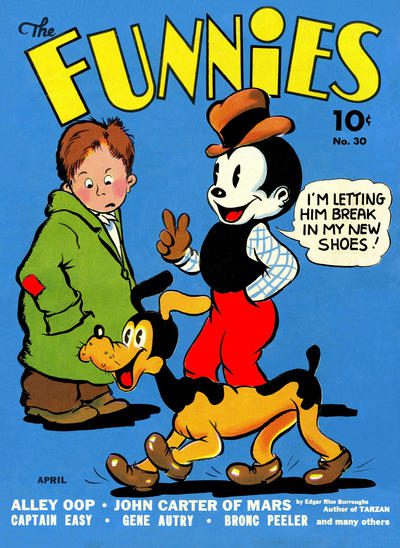

In a dusty attic, among old toys and forgotten relics, a child finds a vibrant, colorful book. This is not just any book; it’s an issue of “Action Comics #1,” featuring the debut of Superman. Such finds, once considered mere child’s play, are now treasures sought by collectors and cultural historians alike. The journey of comic books from disposable entertainment to revered collectibles reveals their complex role in popular culture.
The Golden Age of Comics
The Golden Age of Comics, spanning from the late 1930s to the early 1950s, marked the birth of an industry. This era introduced iconic characters like Superman, Batman, and Wonder Woman. These superheroes quickly became symbols of hope and justice, resonating with a society facing the Great Depression and World War II. The stories were simple yet powerful, reflecting the aspirations and fears of the time.
During this period, comic books were largely viewed as children’s entertainment. They were inexpensive, easily accessible, and widely distributed, making them a staple in many households. Despite their perceived simplicity, these early comics laid the groundwork for a medium that would evolve dramatically. The artistry and storytelling, though rudimentary by today’s standards, captivated young readers and created a loyal fan base that would grow with the industry.
Cultural impact was significant even then. Characters like Captain America were created to boost morale during the war, with covers depicting the hero battling Axis powers. The blend of fantasy and real-world events allowed readers to escape and simultaneously confront the challenges of the era. This duality is a testament to the medium’s inherent potential for depth and relevance, setting the stage for future developments.
The Golden Age also saw the birth of the comic book industry as a commercial powerhouse. Publishers like DC Comics (then known as National Allied Publications) and Timely Comics (which would become Marvel Comics) dominated the market. Their success paved the way for the medium’s future, proving that comic books could be both popular and profitable.
The Silver Age: Innovation and Expansion
The Silver Age, spanning from the mid-1950s to the early 1970s, brought innovation and expansion. This era saw the emergence of new heroes and a shift in narrative complexity. Marvel Comics, under the leadership of Stan Lee, introduced characters like Spider-Man, the X-Men, and the Fantastic Four. These heroes were flawed and relatable, dealing with personal issues alongside their battles against villains.
This period also marked a significant change in art and storytelling. Jack Kirby and Steve Ditko, among others, pushed the boundaries of comic book art, introducing dynamic layouts and more detailed illustrations. The stories delved deeper into character development and moral dilemmas, appealing to an older audience. This shift expanded the readership beyond children, attracting teenagers and adults.
The Silver Age also reflected broader societal changes. Themes of science fiction and space exploration mirrored the Space Race and technological advancements of the time. Stories often included scientific concepts, albeit exaggerated, making them both educational and entertaining. This era cemented the role of comic books as a reflection of contemporary culture and societal aspirations.
Comic book sales surged during the Silver Age, driven by the popularity of these new characters and stories. The industry saw the rise of comic book shops and dedicated fan conventions, fostering a growing community of enthusiasts. This period laid the groundwork for the diverse and vibrant comic book culture that exists today.
The Bronze Age: Social Relevance and Complexity
The Bronze Age of Comics, from the early 1970s to the mid-1980s, brought a new level of social relevance and complexity to the medium. This era was marked by a willingness to tackle serious social issues such as racism, drug abuse, and political corruption. Stories became darker and more nuanced, reflecting the tumultuous times and a growing demand for mature content.
Key titles from this period include “Green Lantern/Green Arrow,” where the heroes confront real-world problems, and “The Dark Knight Returns,” which offered a grittier take on Batman. These stories pushed the boundaries of what comic books could address, challenging readers to think critically about societal issues. This period also saw the rise of anti-heroes and more complex villains, adding layers of depth to the storytelling.
Artists and writers continued to innovate, with more sophisticated artwork and narrative techniques. Neal Adams and Frank Miller, among others, brought a new level of realism and detail to the illustrations. The use of darker tones and more intricate plots appealed to an older, more discerning audience. The Bronze Age solidified the comic book’s place as a serious art form capable of addressing complex themes.
This era also saw significant changes in the industry itself. Independent publishers emerged, offering alternative voices and diverse perspectives. This diversification allowed for more experimental and avant-garde works, broadening the scope of what comic books could be. The Bronze Age was a time of growth and transformation, setting the stage for the modern era of comics.
The Modern Age: From Niche to Mainstream
The Modern Age of Comics, from the mid-1980s to the present, has seen the medium evolve from a niche hobby to a mainstream cultural phenomenon. This era is characterized by the rise of graphic novels and the acceptance of comic books as a legitimate literary and artistic form. Works like “Watchmen” by Alan Moore and Dave Gibbons, and “Maus” by Art Spiegelman, received critical acclaim and brought new respect to the medium.
The digital revolution has also had a profound impact on the comic book industry. Digital comics and webcomics have expanded the reach of the medium, making it more accessible to a global audience. Platforms like ComiXology and Webtoon have democratized comic book publishing, allowing independent creators to reach large audiences without the need for traditional publishers.
Hollywood adaptations have played a significant role in bringing comic book culture into the mainstream. Blockbuster films based on comic book characters have become some of the highest-grossing movies of all time, attracting new fans and revitalizing interest in the source material. This crossover appeal has cemented the place of comic books in popular culture, blurring the lines between different forms of entertainment.
The Modern Age has also seen a greater diversity of voices and stories. More creators from various backgrounds are bringing their unique perspectives to the medium, resulting in a richer and more inclusive range of content. This era represents a maturation of the comic book industry, embracing both its roots and its potential for innovation.
Comic Books as Collectibles
The perception of comic books as collectibles has undergone a significant transformation. Once considered disposable entertainment, many issues are now seen as valuable cultural artifacts. The market for rare and valuable comics has grown, with some issues fetching astronomical prices at auctions. For example, a near-mint copy of “Action Comics #1” sold for over $3 million in 2014.
The factors that drive the value of comic books include rarity, condition, and historical significance. Key issues, such as the first appearances of popular characters, are particularly sought after. The grading system, which assesses the condition of a comic book on a scale from 1 to 10, plays a crucial role in determining its value. Collectors and investors closely monitor these factors, driving a robust market for vintage comics.
Collecting trends have evolved over the years, with modern collectors often seeking both nostalgic and contemporary works. The rise of variant covers and limited edition prints has added a new dimension to collecting, with fans eager to acquire unique and rare items. The future of comic book collecting looks bright, with continued interest from both long-time enthusiasts and new generations of fans.
This growing appreciation for comic books as collectibles reflects a broader recognition of their cultural and artistic value. What was once dismissed as mere children’s entertainment is now celebrated as an important part of popular culture. The evolution of comic book collecting is a testament to the enduring appeal and significance of the medium.
Artistic and Literary Recognition
Comic books have gained significant recognition as an art form and literary genre. This shift is evidenced by the increasing number of prestigious awards and honors bestowed upon notable works. The Eisner Awards, often referred to as the “Oscars of the comic book industry,” celebrate excellence in storytelling and artistic achievement. Winning an Eisner is a mark of distinction, highlighting the best in the medium.
Graphic novels like “Maus” by Art Spiegelman, which won the Pulitzer Prize, and “Persepolis” by Marjane Satrapi, which received widespread acclaim, have demonstrated the potential of comic books to tackle profound and complex subjects. These works have been embraced by both literary and academic communities, further legitimizing the medium. Courses on comic book studies are now common in universities, exploring the historical, cultural, and artistic significance of comics.
The artistic merits of comic books have also been recognized in exhibitions and museums. Institutions like the Museum of Modern Art (MoMA) and the British Library have hosted exhibitions showcasing the history and artistry of comic books. These exhibitions provide a platform for the medium to be appreciated alongside traditional forms of art, highlighting its unique contributions to visual storytelling.
This growing recognition has helped to change perceptions of comic books, moving them from the margins of popular culture to a respected and celebrated art form. The evolution of comic books as an artistic and literary medium reflects their ability to capture the human experience in ways that are both accessible and profound.
The Cultural Debate: Trash or Treasure?
The debate over the cultural value of comic books is ongoing, with strong opinions on both sides. Critics often dismiss comic books as lowbrow entertainment, arguing that they lack the depth and sophistication of other art forms. They point to the stereotypical depiction of superheroes and the sensationalism often found in mainstream comics as evidence of their lack of substance.
However, defenders of comic books highlight their unique ability to blend visual art and storytelling, creating a powerful medium for expression. They argue that comic books can address complex themes and social issues in ways that are both engaging and thought-provoking. The success and critical acclaim of works like “Watchmen” and “Maus” underscore the potential of comic books to be both entertaining and meaningful.
The cultural debate also touches on the role of comic books in society. Proponents see them as a reflection of cultural trends and societal changes, capturing the zeitgeist of different eras. They argue that comic books are an important part of popular culture, providing a mirror to the world and influencing generations of readers. This perspective emphasizes the medium’s ability to evolve and adapt, remaining relevant across different periods.
Ultimately, whether comic books are viewed as trash or treasure depends on one’s perspective. The medium’s evolution from disposable entertainment to respected art form demonstrates its versatility and enduring appeal. As comic books continue to grow and change, they will undoubtedly remain a vibrant and significant part of cultural discourse.
Conclusion
In summary, the evolution of comic books from the Golden Age to the Modern Age reveals a dynamic and multifaceted medium. From their humble beginnings as children’s entertainment to their current status as collectible and critically acclaimed works, comic books have played a significant role in popular culture. Their journey reflects broader societal changes and the growing recognition of their artistic and literary value.
As we look to the future, it is clear that comic books will continue to evolve and adapt, remaining a vital part of our cultural landscape. They offer a unique blend of visual and narrative art, capable of addressing complex themes and resonating with diverse audiences. In the words of Stan Lee, “Comics are stories; they’re like novels or anything else. So the only difference is, they have pictures.” This simple yet profound statement captures the essence of comic books and their enduring appeal.
Comic books are treasures that reflect our world and imagination, inviting us to explore and appreciate the rich tapestry of human experience they depict.





